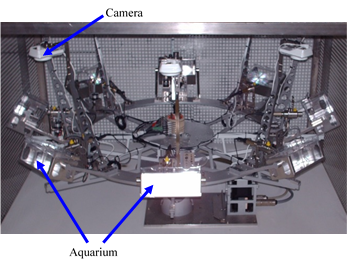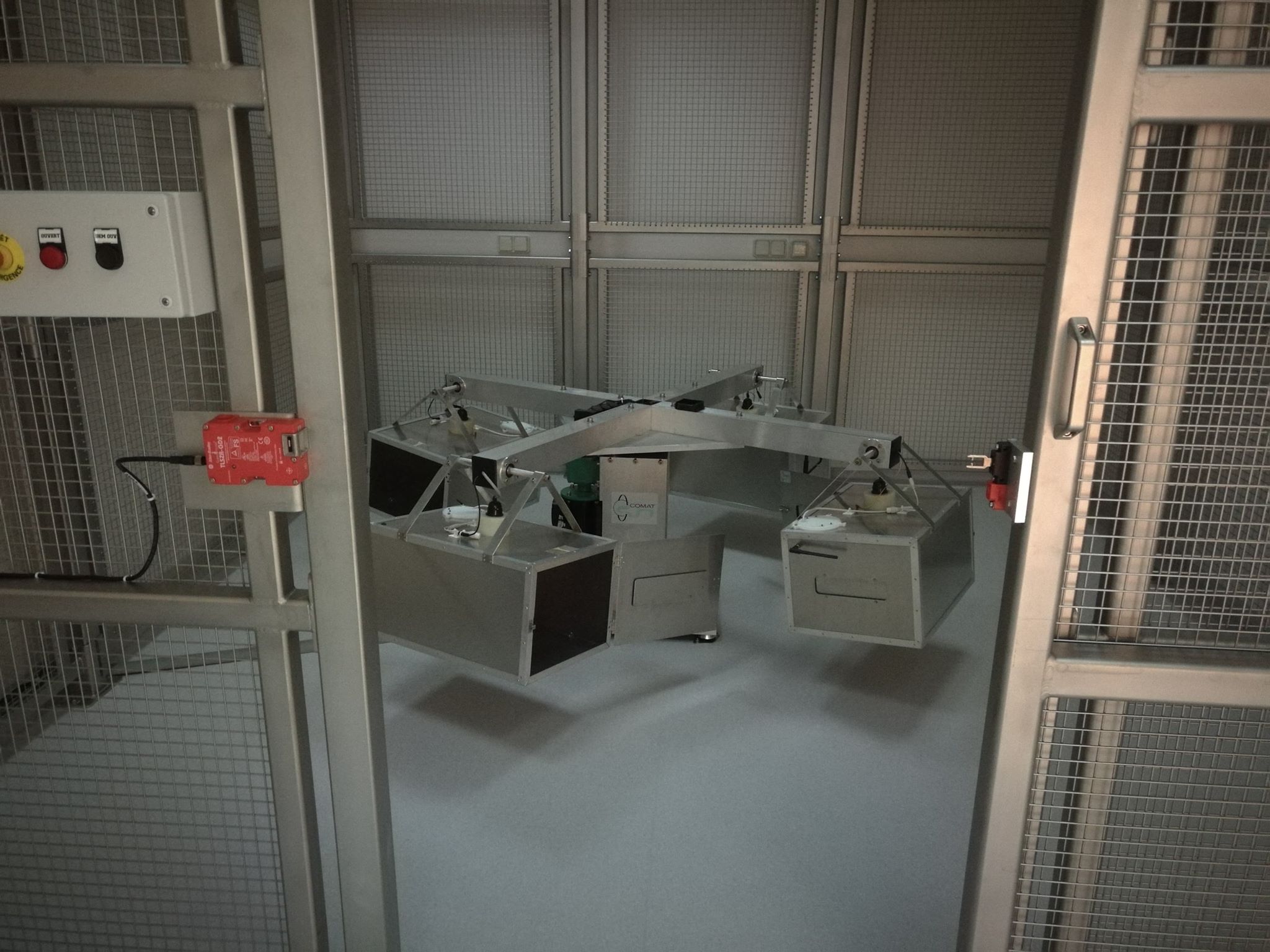
Description the facilities
First aquatic rotor
The first aquatic rotor has eight gondolas, each accommodating an aquarium that can contain up to 0.5 liter of water. Five levels of hypergravity are possible (1.5, 2, 3, 4 & 5g). During hypergravity exposure, aeration of water, food provision, temperature, lighting and ventilation are controlled. Aquaria can be monitored via cameras operating both in visible and infrared.
Second aquatic rotor
The second aquatic rotor can accommodate 8 miniaquariums allowing the development of amphibian embryos onboard the ISS up to developmental stages requiring feeding. Five levels of hypergravity are possible (1.5, 2, 3, 4 and 5g). Each miniaquarium contains 64 ml of water. Aeration is ensured by air-permeable but water impermeable membranes. Each miniaquarium is equipped with a system to clean and circulate water and a system to distribute food. During hypergravity exposure, temperature, lighting, and ventilation are controlled.
Gondola of the second aquatic rotor equipped with a miniaquarium having food delivery and water cleaning systems.
Third aquatic rotor
The third aquatic rotor allows the centrifugation at 3g of 10 miniaquariums (each containing 64 ml of water) without a food distribution system. These miniaquariums are used to study the effects of hypergravity on early developmental stages. As for the other type of miniaquarim, aeration is ensured by air-permeable but water impermeable membranes. During hypergravity exposure, temperature and ventilation are controlled. Attention, no lighting in the container hosting this rotor. If other hypergravity levels are required, or if lighting is required, these miniaquariums without a food distribution system can be placed in the gondolas of the first aquatic rotor.
Random positioning machine (RPM)
A desktop random positioning machine (RPM) from Dutch Space BV is available to subject to simulated microgravity embryos placed in miniaquaria without food delivery and water cleaning systems. One to two miniaquaria can be mounted in this machine. Temperature, lighting and ventilation are controlled. This machine can also be used to subject cell cultures to simulated microgravity.
Rodent large radius rotor
A rodent large radius rotor is available in the specific pathogen free sector of the animal house. Access to this sector is restricted to preserve sanitary status. This large radius centrifuge has four gondolas in which cages containing mice can be placed. The speed can be set up to reach any desired g-level up to a maximum of 4g. Each gondola contains a light system that can be programmed on demand and a camera allowing a remote day and night control of animals. Environmental variables such as temperature, humidity and ventilation are controlled. Four control gondolas are available.







